Advertisement
New study validates bone-salvaging technique in shoulder surgery

A recent proof-of-concept study published in the Online Journal of Shoulder and Elbow Surgery demonstrated the clinical utility of a surgical technique for patients undergoing a total shoulder arthroplasty (TSA). The study validated a technique that has seen greater demand in recent years — first from professional weightlifters and serious athletes and now from a more general patient population in need of a shoulder replacement.
Advertisement
Cleveland Clinic is a non-profit academic medical center. Advertising on our site helps support our mission. We do not endorse non-Cleveland Clinic products or services. Policy
Anthony Miniaci, MD, a shoulder and sports medicine surgeon in Cleveland Clinic’s Department of Orthopaedic Surgery and senior author of the study, notes that this technique is a paradigm shift for shoulder surgery.
“It’s less invasive because it’s bone preserving,” he says. “Most patients who receive this surgery tend to recover very quickly. Depending on the circumstances, they may be discharged the same day or next day.”
The technique is based on a two-part concept designed to more accurately mimic the anatomy of a patient’s humeral head and also use inlay technology that is less invasive and salvages more of the patient’s bone.
The humeral component of the replacement is traditionally shaped like a sphere even though anatomically the humeral head is more of an ovoid shape. While using an ovoid-shaped replacement has shown promising results in laboratory studies, this study validates these findings in a clinical setting.
On the glenoid side, where onlay replacement is traditionally used, Dr. Miniaci and his team combined the humeral head replacement with an inlay implant. Instead of gluing the plastic on top of the bone, the surgeons make a little slot for it in the bone, so that it takes some stress off the plastic.
Dr. Miniaci first conceptualized this technique after observing an unmet need in the patient population he was treating, many of them athletes. He was so pleased with the outcomes that he began to use this approach for every shoulder replacement.

The inlay implant is slotted into the bone so that it shares stress with the patient’s own glenoid
This retrospective study examined 31 shoulders in 29 patients (25 males, 86.2%; 4 females, 13.8%) with an average age of 58.5 years and mean follow-up of 42.6 months. All patients received a preoperative diagnosis of osteoarthritis and were treated with a combination approach of nonspherical humeral head and inlay glenoid replacement by a single surgeon from 2011 to 2016.
In the two groups, one with preoperative concentric glenoids (N = 7) and one with nonconcentric glenoids (N = 24), there were no significant differences in patient-reported outcomes including pain relief, function and satisfaction. The technique showed positive outcomes despite differences in glenoid morphology.
“This is important because while TSA has proved an effective therapeutic approach to treating pain and improving function, there are relatively little data to compare outcomes for concentric and eccentric glenoids,” remarks Dr. Miniaci. “This study helps confirm that we can sensibly use this approach for patients with concentric or eccentric glenoids.”
The comparison of preoperative with postoperative range of motion also showed a significant improvement in forward flexion. All patients with baseline Penn scores surpassed the 30% clinically important difference threshold on their maximal possible improvement, and 94% met or exceeded the
substantial clinical benefit mark.
This proof-of-concept study is a first step in validating the procedure’s clinical success. Dr. Miniaci hopes it soon becomes a standard operation for all patients in need of TSA.
“This technique has the potential to alter the standard of care for treating TSA. I am eager to continue exploring this approach and even less-invasive options to treat future patients,” he says.
Dr. Miniaci reports that he receives financial support (consultant fees, speaker fees, honorarium, royalties, stock options) from Arthrosurface, Inc. and Trice Orthopedics, Inc.
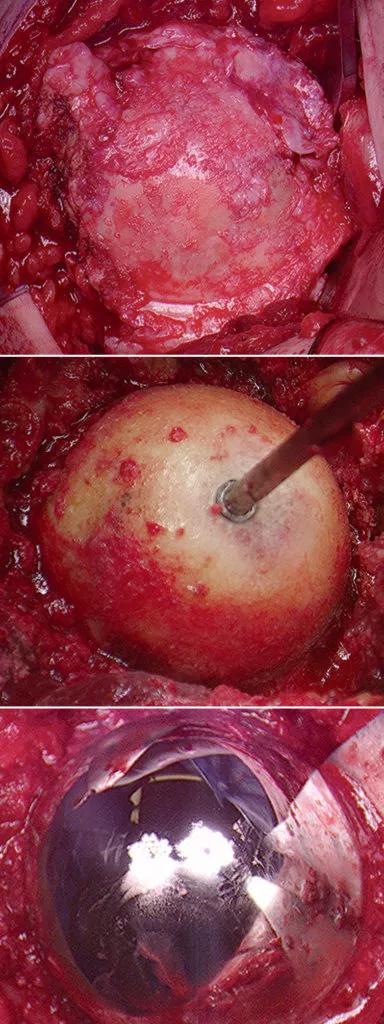
Dr. Miniaci replaced the shoulder with a more anatomical procedure. The humeral head is replaced with a bone preserving oval implant which more closely replicated the patient’s anatomy.
Advertisement
Advertisement
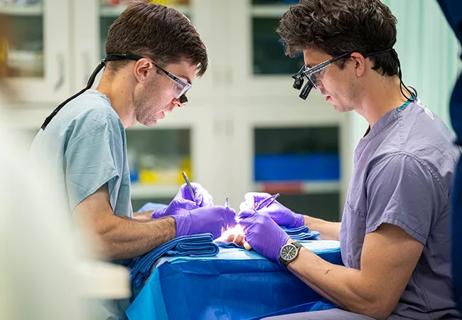
Cleveland Clinic specialists offer annual refresher on upper extremity fundamentals
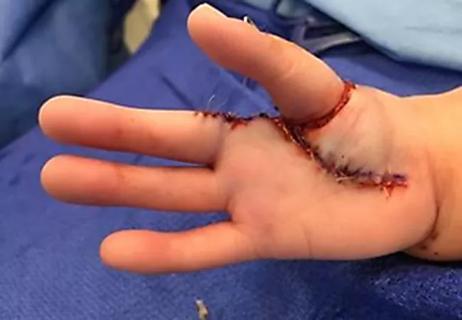
Latest concepts in the surgical creation of functional, opposable thumbs in early childhood

CT imaging using radiopaque markers can help assess healing after surgery
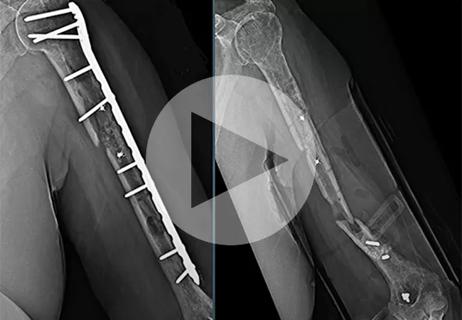
Finally, a solution after multiple revision surgeries for delayed bone healing, loose hardware and unrelenting infection
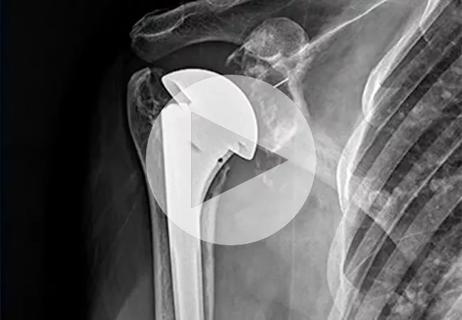
Iliac crest structural autograft repairs large, uncontained defect

Two cases show multiple factors to consider

Orthopaedic oncologist discusses the complex case
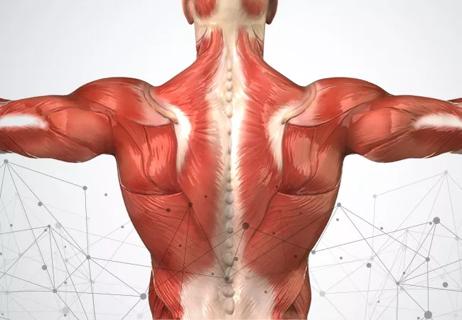
Data system aims to improve orthopaedic care and drive down healthcare costs